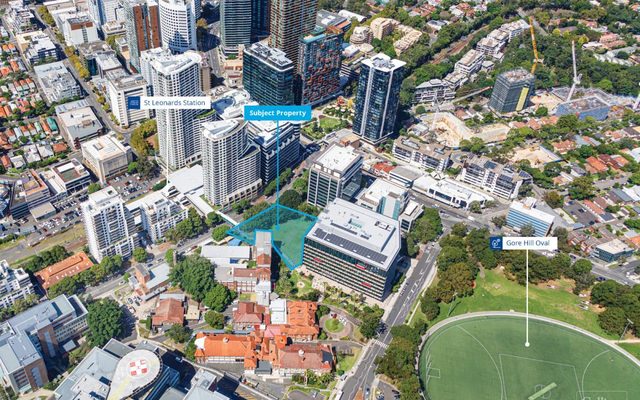This article is from the Australian Property Journal archive
AN off-the-plan apartment buyer in Melbourne has won a legal battle against a developer after discovering the unit they purchased was smaller than advertised, due to Victoria's confusing measurement methods.
The County Court of Victoria has ordered the developer, Hampton Development Pty Ltd and Robek Australia Pty Ltd, to refund the plaintiff Amanda Birch’s $35,900 deposit for the property at Unit 205, 2 Willis Lane, Hampton.
The Court heard that Birch terminated the contract in November 2012, claiming that she received a substantially smaller apartment than what she contracted or what was represented in the brochure prior to the sale.
The developer declined to refund the deposit and lodged a counterclaim of $58,100, representing the difference between the purchase price in the contract of sale and the resale to a third party for $265,000 in August 2013.
The plaintiff bought the apartment in February 2011 for $359,000 and claimed that in the brochure, the total area advertised was 48.5 sqm with an internal area of 40.5 sqm.
In September 2012, the plaintiff obtained conditional approval from ANZ Bank, subject to an acceptable valuation.
In October 2012, ANZ valued the property at $330,000 and described the living space of the apartment as 32 sqm. As a result, the bank was unable to finance the property on the basis of 80%, given the disparity in size.
The plaintiff subsequently inspected the property with a surveyor who found a 12.7% difference between the area given in the plans (48.5 sqm) and the actual airspace conveyed (42.6 sqm).
After the inspection, the plaintiff terminated the contract.
Justice Kennedy found in favour of the plaintiff and said,
“I am also satisfied that the plaintiff would not have entered the contract had she known of the true area based on the “title” measurement. Moreover, that she relied on the measurements reflected in the contract which were most material in the light of her financing issues.
“I am therefore satisfied that the plaintiff was entitled to terminate the contract and that she is entitled to the return of her deposit,”
At the same time, her honour said she was satisfied that the defendants did not engage in misleading conduct as alleged.
The case reaffirms the need for Victoria to adopt a standard method of measurement for apartment sizes to prevent purchasers from having issues in the future.
Currently, there are two main methods of measurement operating in the assessment of strata titled residential premises in the state, causing confusion for all key stakeholders.
The Australian Property Institute along with banks, developers, architects, surveyors, and other industry bodies, have been in discussions with the Victorian government over the past 12 months on the potential crisis facing apartment sales.
Earlier this year, API Vic president Aldo Galante recommended a surveyor’s estimation be undertaken on all future Plans of Subdivision based on a specific definition, thereby providing consistency of areas.
“People are buying apartments ‘off the plan’ unaware of how the area stated is calculated.
“The API is concerned that valuers are being asked to value apartments based on their internal (net) measurements, which is in many cases differs from areas on the marketing brochures based on gross area, even though both areas can be correct,” Galante said at the time.
API apartment spokesman and Knight Frank’s managing director of valuations David Way noted a classical case when a purchaser bought an apartment that has been marketed as 42 sqm by a developer using the Property Council method, which measures the gross area, and the purchaser obtains a loan approval from the bank.
However when it comes to settlement, the bank’s own valuer, who utilises a net measurement, concludes the apartment is 38-39 sqm.
“When you are talking about expensive apartments, where it is $12,000 to $14,000 per sqm or more, that makes a quite a big difference. The developers maintain that their apartment is 42 sqm, but the bank valuer said it is under 40 sqm, so the purchaser is caught in the middle.
“Melbourne is experiencing an apartment boom and we are worried this will affect apartment sales and the saleability of projects,” he added.
Way said the implementation of area calculations would bring Victoria into line with other key jurisdictions of New South Wales and Queensland.
“We are not asking for something new. Victoria is playing catch up with NSW and QLD. Those states have a clear definition of measuring apartments and there is transparency for all parties. Both definitions are correct, but we need to adopt only one, as the standard.
“As we have seen in NSW and QLD, if there is legislation in place, the market will respond quickly. The developers will know whether they are advertising the correct size and if the apartments are under 40 sqm, they will increase the size.
“The banks will know what they are lending on and during settlement, they will not get a different measurement. Finally, the purchaser knows what they are buying.
“It is just common sense,” Way said earlier this year.
The issue is a significant concern because the Melbourne apartment market is growing rapidly.
Melbourne’s apartment stock is set to increase by 38% between 2013 and 2016, from 95,500 to 131,800, according to Charter Keck Cramer. Compared to a decade ago, the city had only 35,000 apartments (approx).
Between 2010 and 2013, more than 200 projects were released totalling 14,000 units and at the same time, 11,200 apartments were completed. In 2014, Charter Keck Cramer expects at least 13,000 apartments to be completed.
In total, Melbourne’s apartment stock is forecast to reach 131,800 by 2016, which does not include the 17 new planning applications submitted at Fishermans Bend for over 9,000 units.
Property Review



